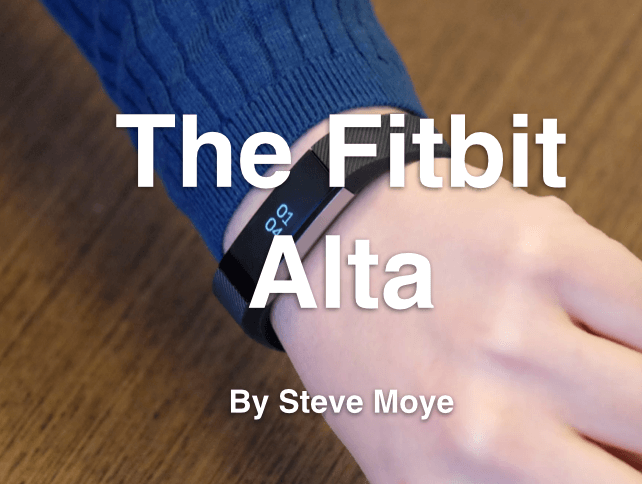In the seven years that it’s been around, Fitbit’s design hasn’t changed much. It doesn’t look like jewelry, it isn’t high-fashion, it’s just a Fitbit. Yet that doesn’t mean it isn’t susceptible to the trends in its industry; take a look at, for example, the new $130 Fitbit Alta. I recently came across a review that looked at the new product, with some interesting insight about it. The company has rejected the clunky wristband of yesteryear for a bit more of a delicate design. The Alta is slimmer and sleeker than any other previous Fitbit designs. Fitbit and its competitors have spent this year making more “fashionable” products so that you’ll want to wear them.
Yet despite this change, the Alta still looks like a Fitbit, thanks in large part to its scratch-resistant and tap-sensitive OLED display. It allows you to view how many steps you’ve taken without having to open up the Fitbit all the time. Yet for all its convenience, the Alta is still very similar to other Fitbits. It tracks your daily activity levels, sleep and some of your fitness sessions. It doesn’t have heart rate sensors or GPS, although it does have move reminders if you’ve been sedentary for too long.
The Alta has Fitbit’s “smart tracking” feature for exercise, meaning it can automatically detect when you’re doing certain high-intensity activities. Yet these sessions have to involve a lot of movement in order for the Alta to auto-record it. It also does automatic sleep-tracking, yet the display sometimes lights up when you toss and turn at night, which could wake you up. To fix this, you need to open the Fitbit app on your phone and turn off “Quick View” before going to sleep. Battery-life expectations for the Alta are five days per charge, which is the perfect amount of time to wear it about without forgetting where you put the charging cord when the time comes to use it. Fitbit hasn’t made any major changes to its mobile app since its last new products were released, except for now showing “smart tracked” exercises and letting you set weekly exercise goals.
In short, the review describes a solid improvement on the previous Fitbits. But it still isn’t revolutionary. It seems like Fitbit has been going the route of AC/DC: improve it if you can, but if it’s not broke don’t fix it.
